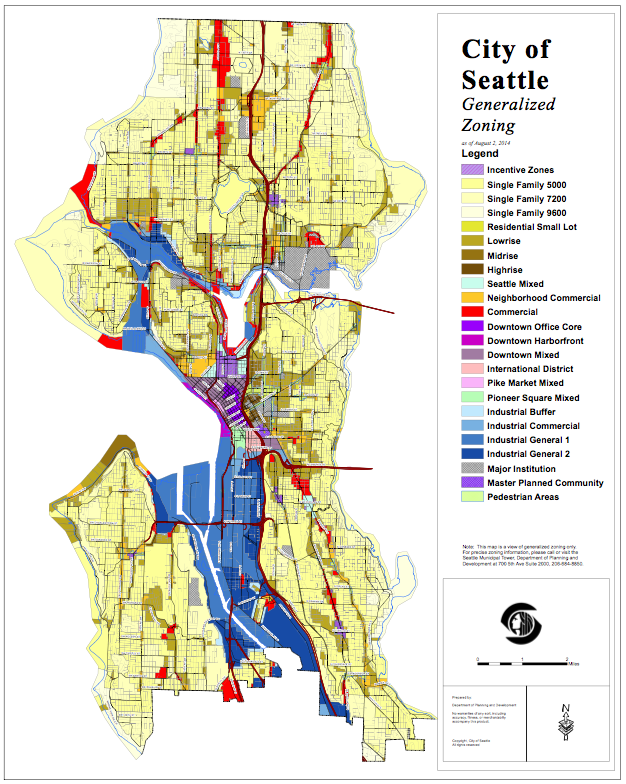As the number of jobs in Seattle explodes, the city is grappling with how to make room for all the population growth that's expected to follow. The city's "Housing Affordability and Livability Agenda" maps out a strategy to do so, focusing mainly on infill development in denser areas near transit. Most of the city, however, is zoned for single-family housing.

Austin Bell at Network blog The Urbanist says Seattle should look for inspiration from Japan, where zoning for these low-rise areas also "emphasizes mixed uses to an extent that is almost never found in American single-family zoning." Even modest changes to single-family zoning -- making room for so-called "missing middle" housing -- could accommodate hundreds of thousands more residents, he says:
On two-thirds of Seattle’s land, it’s legally impermissible to build anything other than a single-family home (certain types of institutional or public uses excepted) covering more than 35% of a lot that’s no less than 5,000 square feet, preferably with an alley-accessible parking space...
Outside of infill developments in Central Seattle and urban villages, the slow conversion of single-family zones to low-rise zones is Seattle’s best hope for increasing housing development capacity. In July 2015, HALA Strategy SF.2 explicitly called for “more variety of housing types, such as small lot dwellings, cottages, courtyard housing, duplexes and triplexes, in Single Family zones.” SF.2 “does not eliminate the option of single-family housing; rather, it increases the opportunities for more efficient use of very limited land resources” and went on to note that “low density use would be less intense than the Lowrise 1 multifamily (LR1) zone.” However conservative this recommendation, it hinted that change may be coming to single-family zones.
This strategy was so controversial that it was struck from HALA almost immediately, but it should not be abandoned. The Japanese model for inclusive residential zoning provides an example of how a wider variety of housing types and uses, including low-level retail uses, can be allowed to exist in Seattle’s single-family neighborhoods. Single-family mixed-use zoning is a change that Seattle can implement that will benefit new arrivals, middle and low income people, and residents of single-family neighborhoods...
Using the City of Seattle’s development capacity model, I calculated how many units Seattle’s single-family zones could yield if significant redevelopment through rezoning occurred. If all of Seattle’s single family land outside of urban villages were rezoned to allow residential small lot development, anywhere from 19,600 to 122,641 units could be produced depending on how much many currently developed parcels would be redeveloped. If this land was rezoned to accommodate low rise 1 housing, the equivalent figure would be between 122,641 and 205,939 units. This analysis shows that the inclusion of mixed uses in single-family land has a huge amount of potential for providing family housing.
Elsewhere on the Network today: Human Transit recommends using the phrase "autonomous vehicles," not "autonomous cars," to avoid the impression that transit will become obsolete in the self-driving future. And Transportation for America shares a video explaining how Utah became an unlikely transit success story.





